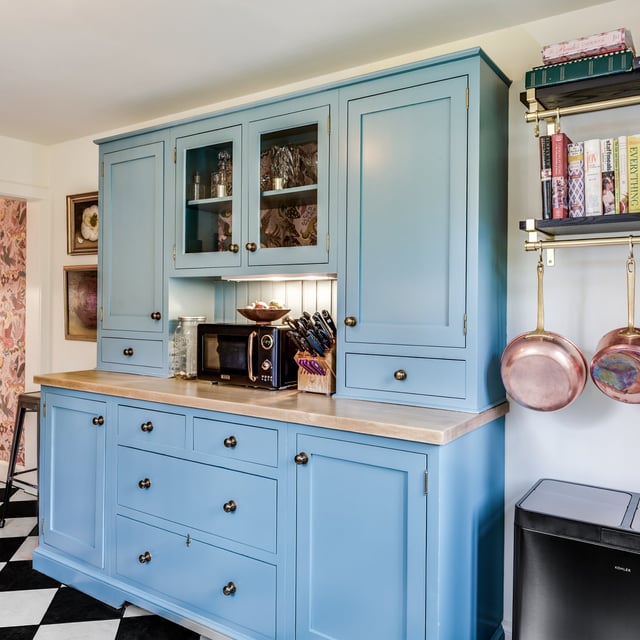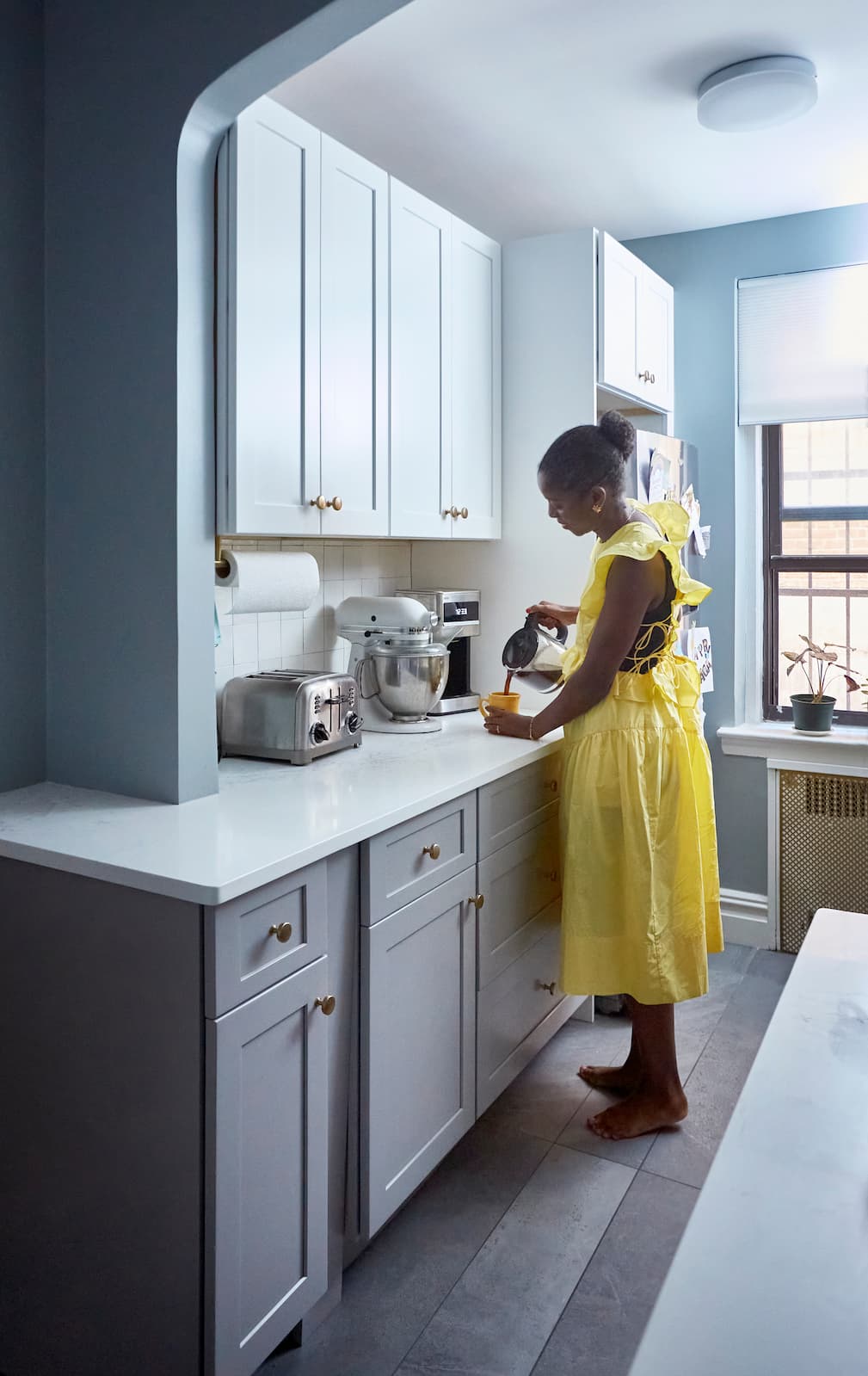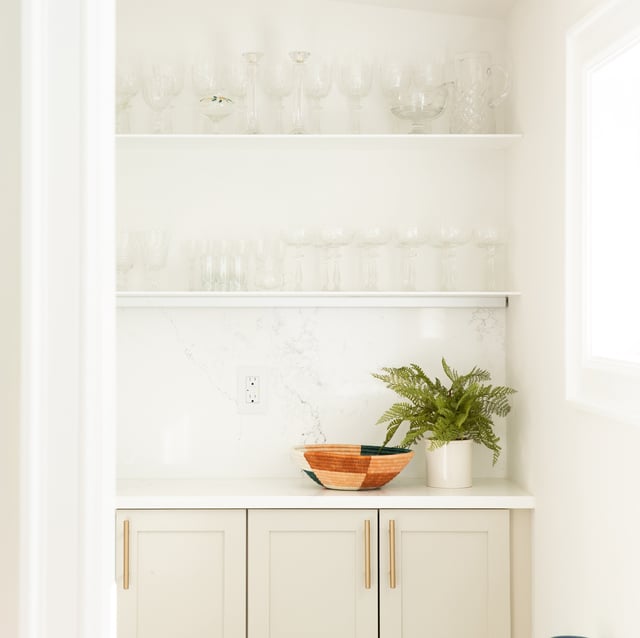
Cabinets
Are Custom Cabinets Worth the Cost? It Depends
12.21.2025
Our New Year savings event is here: Get up to $6,500 off your project today (terms apply).

Budget your upcoming kitchen remodel with help from Block

In This Article
There are plenty of reasons to change your cabinets: a dated door style that drags the room down, finishes that won’t come clean, boxes that waste storage, or a layout that makes every dinner prep feel like a maze. Maybe you’re refreshing the space to sell, or you’re finally ready to give daily cooking the storage and flow it deserves. Sometimes it’s as simple as wanting the kitchen to feel brighter, calmer, and more you.
At some point, you’ll likely face a key decision: reface your cabinets or replace them entirely.
The cost of refacing kitchen cabinets ranges from the mid‑$4,000s for a small kitchen to $12,000–$20,000+ for larger spaces and premium veneers. Pricing is driven by the number of doors and drawers, veneer or laminate grade, door style, and add‑ons like soft‑close hinges. Real‑wood veneers, custom color matching, and pre‑work to repair boxes can raise the total.
Refacing swaps doors and drawer fronts, applies new veneer to face frames and exposed ends, and updates hinges and pulls. It delivers a big visual lift without moving cabinets, changing interior dimensions, or disrupting the layout. Because boxes stay put, refacing often pairs smoothly with keeping existing countertops and floors.
Refacing won’t fix a clumsy layout, tight clearances, or shallow storage. Structural issues—water damage, sagging, out‑of‑square boxes—remain and may worsen if ignored. Interior organization stays largely the same unless you add accessories, which increases cost. If you plan to move appliances, add tall storage, or resize an island, refacing won’t cover those changes.
Typical duration: 3–10 days of onsite work once materials arrive
Refacing works well when cabinet boxes are structurally sound—square, dry, and free of damage. It’s a smart choice for homeowners focused on style updates like door profiles, finishes, and hardware, without changing the layout or touching countertops. The faster turnaround and lower cost compared to full replacement make it especially appealing for budget-conscious refreshes.
Compare Proposals with Ease

If refacing kitchen cabinets doesn’t quite meet your remodeling needs, outright replacing them is the most logical next step. However, the cost of such a project is the factor most likely to hold homeowners back.
Full replacement ranges widely: stock cabinets for a small kitchen can start around $6,000–$10,000 for boxes only, semi‑custom often lands between $12,000–$30,000+, and custom cabinetry can exceed $35,000–$60,000 depending on species, finishes, and interior features.
Costs shift based on the square footage, cabinet grade (stock, semi‑custom, custom), wood species, finish type (paint, stain, specialty), organizational inserts, trim details, and layout changes that trigger electrical, plumbing, flooring patching, or new countertops.
Typical duration: 2–6 weeks of active work once cabinets are onsite, plus 2–10+ weeks of lead time for ordering and delivery
Cabinet replacement gives you full control over layout, dimensions, and storage—solving both function and aesthetics at once. You can optimize workflow and capacity with modern systems and purpose‑built inserts.
Cabinet replacement often cascades into adjacent scopes—new countertops and backsplash, appliance shifts, venting and electrical updates, and flooring infill or replacement. Plan a temporary kitchen, confirm delivery timelines to avoid extended downtime, and verify wall conditions before install. Clearances should meet code and appliance specs so doors, drawers, and traffic flow play nicely together.
Best for: full layout changes or structural issues
Replacing cabinets is the better path when boxes are damaged, poorly built, or no longer meet your storage needs. It’s ideal for projects involving layout reconfigurations, accessibility upgrades, or integrated storage systems. If you’re also planning to update countertops, flooring, or appliances, a full replacement offers a cleaner, more cohesive approach than trying to work around outdated cabinetry.
Design a Home That’s Uniquely Yours
Block can help you achieve your renovation goals and bring your dream remodel to life with price assurance and expert support.
Get Started
Block is a renovation platform built around homeowners, combining planning tools and expert guidance with a vetted contractor network.
Before you touch a single hinge, our Renovation Studio gives you a clear picture of where you’re headed. Explore door styles and finishes side by side, swap hardware in a click, and preview how paint colors play with your counters and floors. Visualize storage upgrades like adding full-height uppers or trading a blind corner for pull-outs—while getting a realistic read on pricing as you go. The result is a dialed-in plan: a style you’re excited about and a clearer idea of whether refacing or replacing the kitchen cabinets better fulfills your vision and budgetary restrictions.
Once your plan is locked, Block brings the right professionals to the table—licensed, vetted contractors who match your project’s size, style, and schedule. You’ll receive side-by-side proposals with clear scopes, so it’s easy to compare apples to apples instead of decoding vague line items. Our team can help review scopes to catch common misses early, and payments move through a progress-based system that releases funds only as work gets done.
Throughout the build, you’ll have transparency on scheduling, quick answers when questions pop up, and steady guidance if surprises arise.

Written by Block Renovation
Is refacing cabinets an easy DIY project?
What are signs of damaged cabinet boxes?
What cabinet colors are trending?
White kitchen cabinet designs remain popular for their bright, timeless look and easy pairing with counters and floors. Also popular: warm greige and putty tones, soft taupe, natural wood finishes (white oak, walnut), and deeper accents like navy, charcoal, and forest green—often used on islands or lowers with lighter uppers.
What cabinets are easiest to clean?

Renovate confidently with Block
Easily compare quotes from top quality contractors, and get peace of mind with warranty & price protections.
Thousands of homeowners have renovated with Block

4.5 Stars (100+)

4.7 Stars (100+)

4.5 Stars (75+)

Cabinets
Are Custom Cabinets Worth the Cost? It Depends
12.21.2025

Cabinets
Mixing Natural Wood and Painted Kitchen Cabinets
12.16.2025

Cabinets
Upper Kitchen Cabinets with Glass Doors: Styles, Costs & Design Tips
12.06.2025

Cabinets
Refacing vs. Replacing Kitchen Cabinets
09.29.2025

Design
Open Kitchen Cabinets with No Doors: Inspiration & Tips
07.31.2025
Renovate confidently